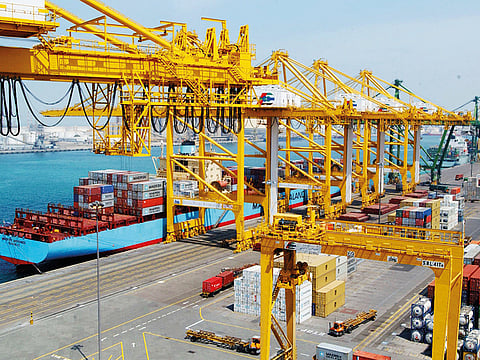Economies should prioritise exports in rebuild drive
A focus on getting domestic consumption back on even keel takes longer to realise

Domestic consumption alone cannot drive economic growth and recovery. For argument’s sake, let us assume that an economy drives most of its growth from domestic consumption.
In normal times, the economy would enjoy balanced domestic supply and demand, with production capacity that can offset spikes in the latter. Prices will be decided at whatever point demand and supply intersect, and we will have a textbook case economy.
Enter COVID-19...
Supply drops because of sickness and demand goes down, or ceases to exist altogether, because of lockdowns. Thus, prices drop to lower demand-supply intersection points. Overall, this would mean a reduction in economic activity and a slowdown in growth.
This is when a government intervention is permitted under the Keynesian school of thought, with increased government spending that will promote consumption by other sectors in the economy. Government spending will also need to target activities that would minimise job loss - hence unemployment - as well as activities that will hasten economic recovery post COVID-19.
Slow going
That same economy will also be the slowest to go back to normal, irrespective of how quick a government was in responding to COVID-19, or how short-lived a lockdown was.
Government intervention and spending is not limitless, and it comes at the expense of depleting reserves and higher debt levels. By the end of the crisis, countries will be left with a different set of economic and fiscal issues to grapple with. The situation is even more precarious for countries with the highest surges in unemployment rates, further limiting domestic consumption during and post the crisis.
Rebuild on exports
Now, compare that economy to another that has a strong export sector. Even though such an economy will also be negatively impacted by the COVID-19 crisis and the resulting disruption in global supply chains, it will also be among the first to recover as the disruption caused by the pandemic abates. Here is why.
First, countries have imposed lockdowns at different timings and are likely to exit them at different timings too. This also means that economies will recover at varying rates. That being said, an economy that is specialised at producing what it is good at can satisfy domestic needs as well as serve international demand for its good and services.
As a result, a drop in domestic economy activity can be compensated for by a recovering international economic activity. In a nutshell, an economy with a strong export sector stands ready to reap the ensuing benefits from a post COVID-19 economic recovery, regardless of the recovery rate in domestic economic activity.
Secondly, the flexibility to switch from domestic economic activity to international economic activity will limit the COVID-19 impact on unemployment, alleviating governments’ fiscal burdens. Based on that, governments will not only emerge from the crisis with lower unemployment rates, but with lower indebtedness levels as well.
Timing the recovery
Thirdly, a strong export sector will allow for a well-timed opening of the economy and a well-paced recovery in domestic economic activity, rather than rushing into doing so with, potentially, grave consequences.
Notably, the role of the private sector is vital in restarting an economy and in a faster resumption of economic activity. Its role is also crucial in ensuring a stable revenue stream for governments during and after the crisis, an advantage that a reasonable corporate tax scheme can guarantee, compared to a fee structure.
To conclude, an economy that is too dependent on domestic consumption is likely to suffer the most from the COVID-19 pandemic. Not only that, but its economic recovery will be slower than economies that have nurtured strong export sectors. Since economies around the world will recover at varying rates, an economy that drives its growth from domestic as well as international economic activity, via exports, will be in a much better economic position post COVID-19.
The last thought that I want to leave you with: What is the right balance between domestic and international economic activity?
- Abdulnasser Alshaali is a UAE based economist.
Sign up for the Daily Briefing
Get the latest news and updates straight to your inbox



